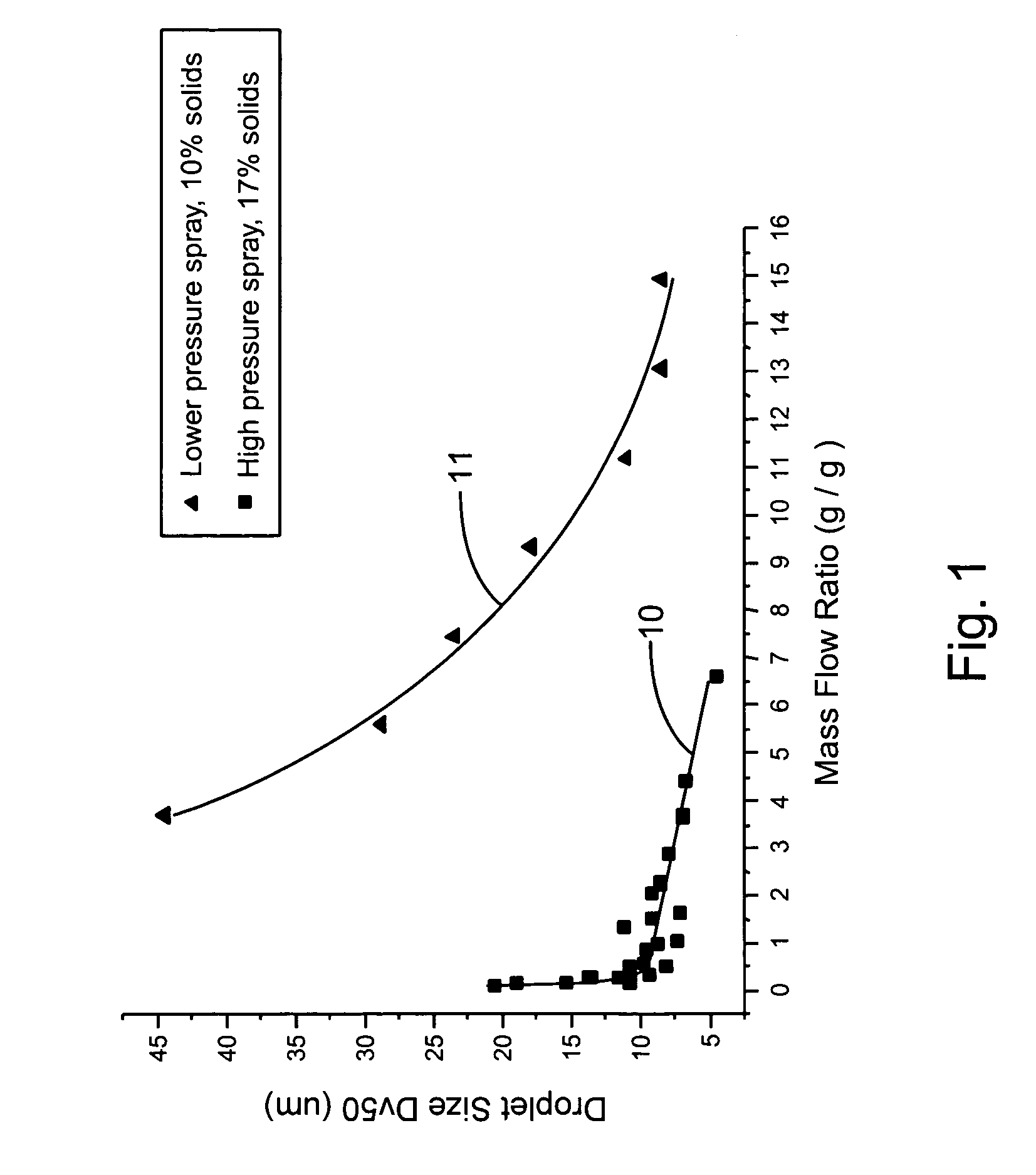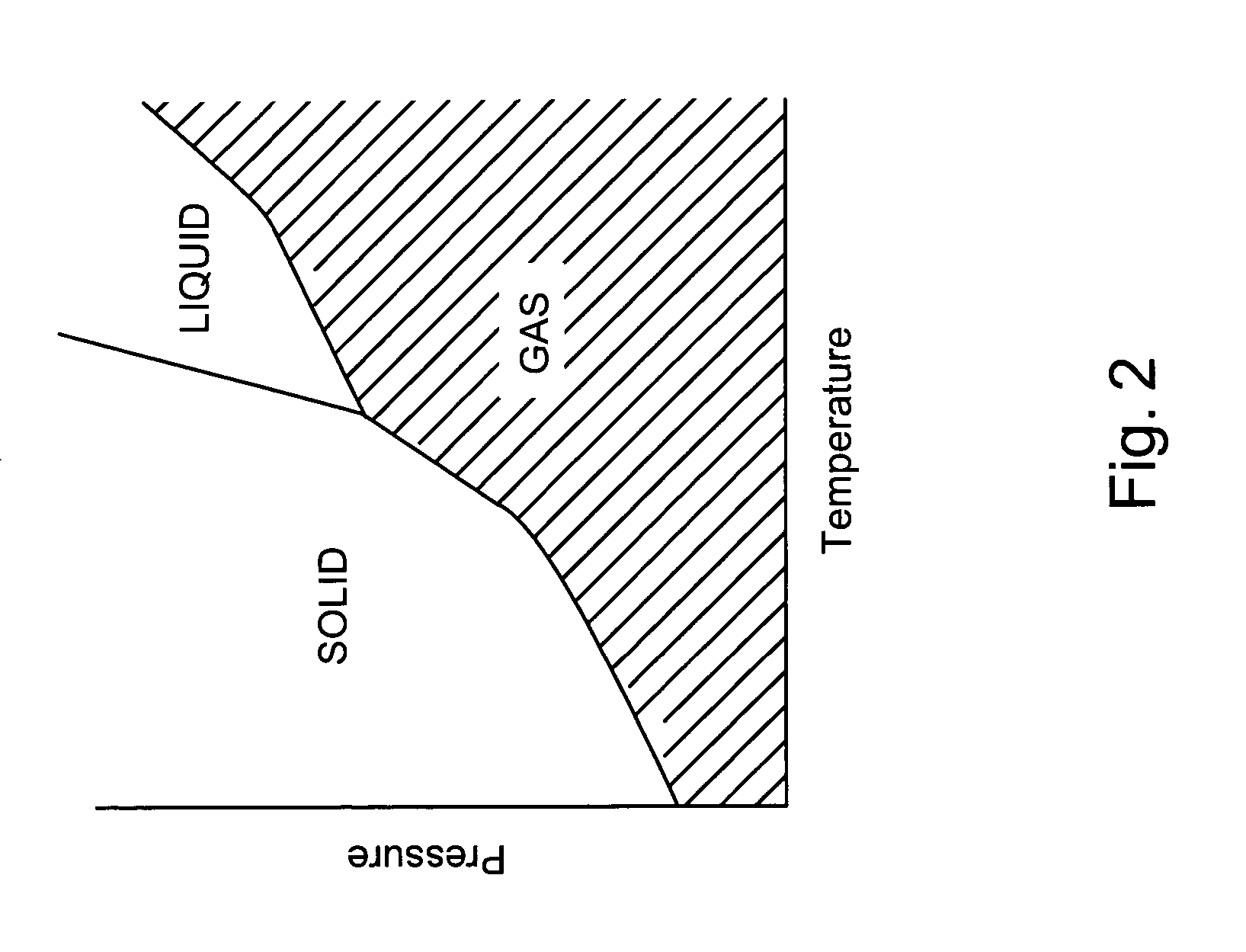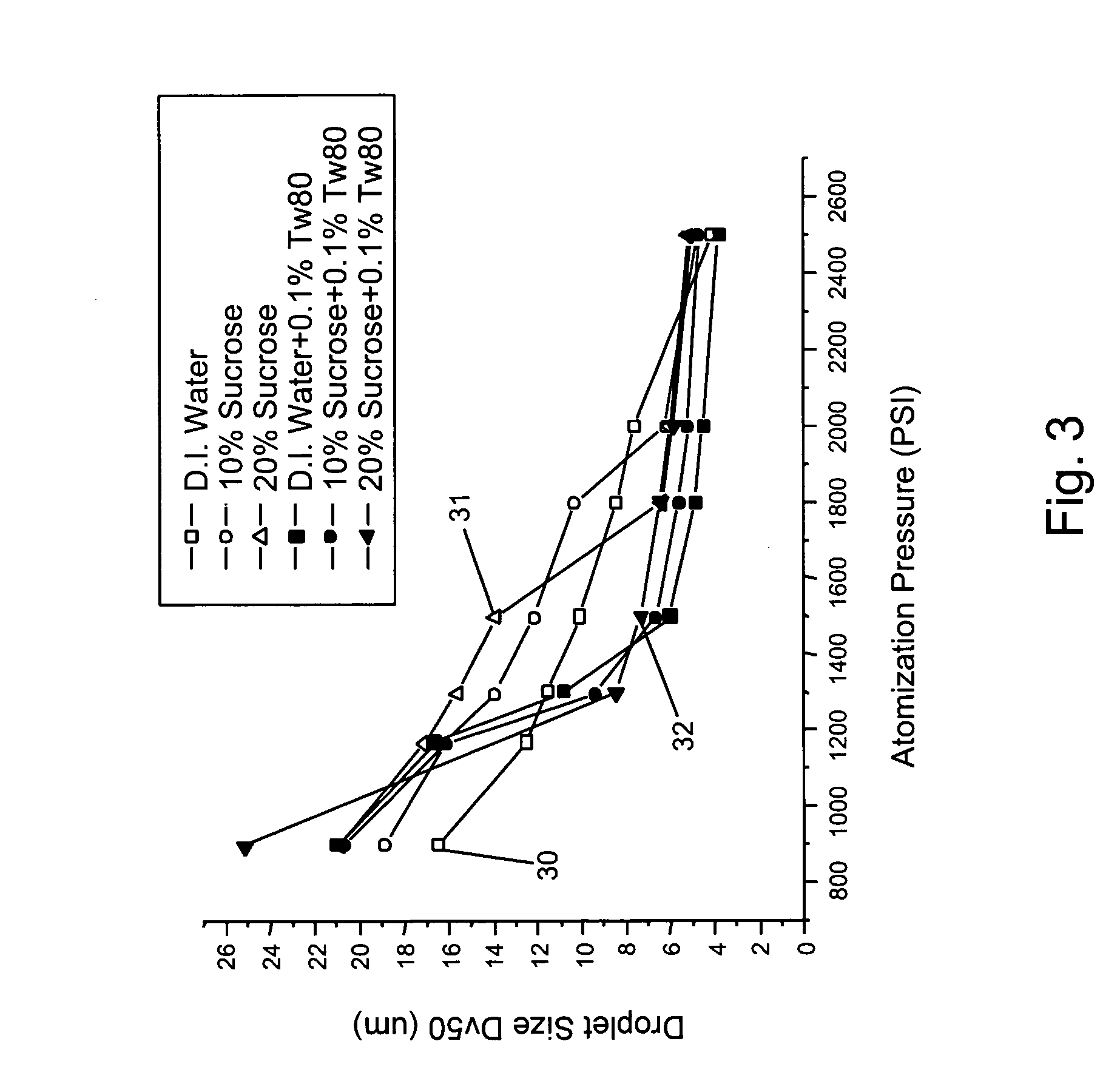High pressure spray-dry of bioactive materials
a bioactive material and high-pressure spraying technology, applied in the field of spraying dry particle formation and preservation of bioactive materials, can solve the problems of drying and salted food usually experiencing a loss of fresh appearance and nutritional value, sensitive molecules can be denatured, or otherwise inactivated, and achieves the effects of reducing shear stress, increasing stability and shelf li
- Summary
- Abstract
- Description
- Claims
- Application Information
AI Technical Summary
Benefits of technology
Problems solved by technology
Method used
Image
Examples
examples
[0099]The following examples are offered to illustrate, but not to limit the claimed invention.
examples 1
High Pressure Spray Drying of Antibodies
[0100]An aqueous solution was prepared to contain 8 weight percent of a monoclonal antibody, 6 weight percent sucrose, 0.2 weight percent PVP, and 2 weight percent arginine. The solution was sprayed from a nozzle at about 1150 psi to provide droplets with an average diameter of about 10 μm. The droplets were dried in a stream of dry nitrogen gas ranging in temperature from about 60° C. to about 45° C. to produce powder particles with an average diameter of about 4 μm and a moisture less than 5 percent. The powder particles were initially reconstituted into solutions with antibody concentrations of up to 500 mg / ml and with less than 3 percent total aggregates and fragments. FIG. 8 shows the antibody after reconstitution at high concentrations and storage for nine days, or more, at 50° C. The powder particles remained stable with trend analysis predicting stability, with less than 3 percent aggregates, over about 7 years in storage at 4° C., or ...
example 2
High Pressure Spray Drying of Live Virus
[0103]An aqueous solution was prepared of live influenza virus at about 7.5 log FFU / ml in AVO47r (5% sucrose, 2% trehalose, 10 mM methionine, 1% arginine, 0.2% Pluronic F68, 50 mM KPO4, pH 7.2) was high pressure sprayed at 1300 psi into a drying chamber with a 55° C. inlet temperature. Reconstitution of the dry powder showed no significant viability loss with a titer of about 7.5 log FFU / ml. The formulation required 23 days at a 37° C. accelerated storage temperature to experience a 1 log loss of viability.
PUM
| Property | Measurement | Unit |
|---|---|---|
| viscosity | aaaaa | aaaaa |
| concentration | aaaaa | aaaaa |
| internal diameter | aaaaa | aaaaa |
Abstract
Description
Claims
Application Information
 Login to View More
Login to View More - R&D
- Intellectual Property
- Life Sciences
- Materials
- Tech Scout
- Unparalleled Data Quality
- Higher Quality Content
- 60% Fewer Hallucinations
Browse by: Latest US Patents, China's latest patents, Technical Efficacy Thesaurus, Application Domain, Technology Topic, Popular Technical Reports.
© 2025 PatSnap. All rights reserved.Legal|Privacy policy|Modern Slavery Act Transparency Statement|Sitemap|About US| Contact US: help@patsnap.com



